Quantification of Agricultural Water Productivity at Field Scale and Its Implication in On-Farm Water Management

Authors:
The Kingdom of Saudi Arabia (KSA) is under
extreme water shortage conditions. About 80 % of water in
KSA is utilized by the agricultural sector; therefore, proper
management of irrigation water is required to produce more
food from less water. Water productivity concept was
emerged and successfully quantified with the use of remote
sensing as well as variable-rate application technologies. In
this study, water productivity (WP) of three major crops (alfalfa,
corn and Rhodes grass), cultivated in the Eastern Province
of KSA under center pivot irrigation system, was
estimated using Landsat-8 images in conjunction with in situ
field observations. Evapotranspiration (ET)/water use maps
(WUM) of irrigated fields was generated from Landsat-8 data
using SEBAL model. Subsequently, the crop type and growth
stage wise amount of water required for the irrigation was
estimated and the irrigation schedules were prepared. Zone
based Variable Rate Irrigation (VRI) system was used to
optimize the application of irrigation water. Classified ET
maps are used as a base for the formulation of prescription
map for VRI. The accuracy of SEBAL derived ET maps were
assessed against the actual ET recorded by the Eddy Covariance
(EC) flux tower installed on an alfalfa field. Crop Productivity Map (CPM) of alfalfa and Rhodes grass were
developed using hay yield monitor data, while forage corn
productivity was represented by the relationship between the
NDVI and sampled silage corn yield (kg m-2). Water productivity
map was generated by dividing the CPM with the
WUM. The deviation between SEBAL predicted and EC flux
tower recordedETwas ranged from2.92 to 7.13 %. The mean
predicted yield (kg ha-1) of alfalfa, corn and Rhodes grass
was 2934, 4650 and 3368, respectively. The fields with remote
sensing (RS) and VRI application was shown higher WP
compared to without RS and VRI inputs. The recordedWPof
silage corn, Rhodes grass and Alfalfa with RS and VRI inputs
was 1.09, 0.81 and 0.83 respectively, whereas, it was
decreased to 1.03, 0.64 and 0.61 kg m-3 respectively for the
fields without RS and VRI inputs.
